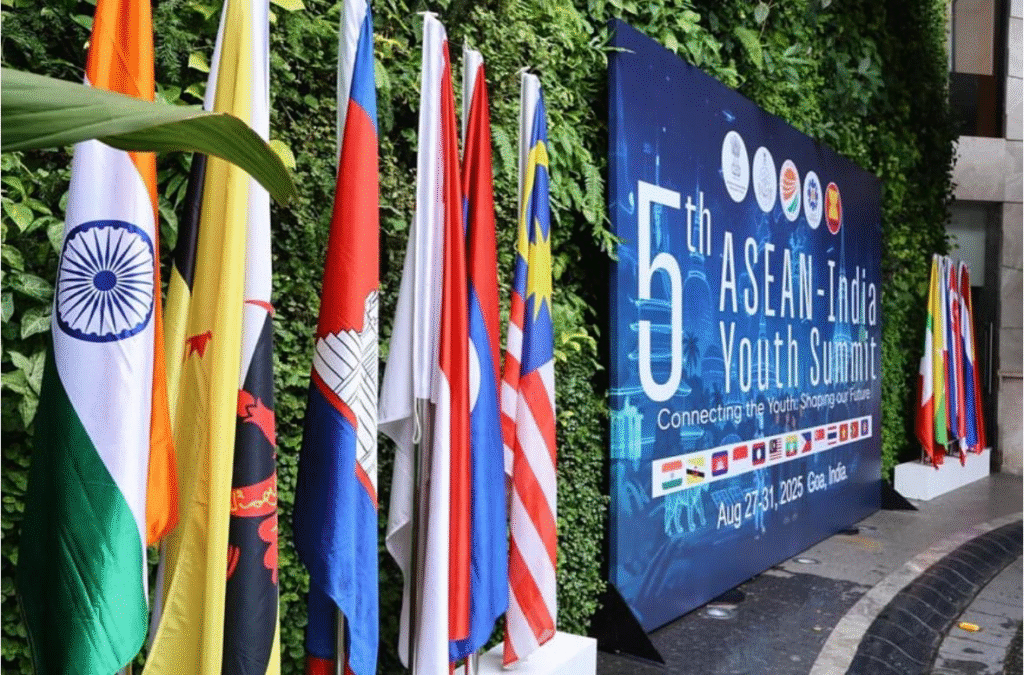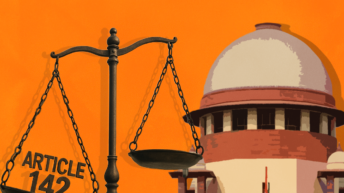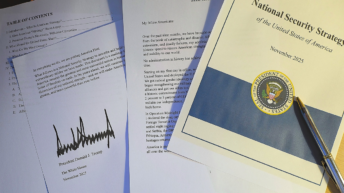
The article refers to relevant discourse on India’s growing influence in ASEAN (Association of South East Asian Nations), from the first-hand experiences of listening, discussing, and interacting with practitioners of diplomacy at the fifth edition of the ASEAN-India Youth Summit in Goa from 27 to 31st August 2025. The summit was jointly organised by the India Foundation, a leading Indian think tank, in collaboration with the ASEAN Secretariat, the ASEAN Foundation, the Government of Goa, and the Ministry of External Affairs of India. The summit paved the way for a nuanced understanding of relations between India and ASEAN, and of the potential for India and ASEAN to act as ‘two poles’ in this multi-polar world order. ASEAN is a regional grouping of ten states in South East Asia, with Timor Leste set to join the grouping as its eleventh member in October 2025. Timor Leste was also invited to this Summit for the first time and gave its take on India-ASEAN relations along with other members of the association. The Summit focused on the role of the youth as change-makers and community builders in charting and implementing future cooperation.
The article highlights the evolution journey of India and ASEAN from partners and players to ‘Poles’ in this global world order. In doing so, it highlights how different ASEAN countries view ‘India’ as a ‘trusted partner’, and are willing to strengthen the relations, amidst current geopolitical tensions. The Ambassadors, Ministers, and delegations from each ASEAN country acknowledged a profound awareness of their deep cultural and historical linkages with India and of the way history and geography continue to shape the India-ASEAN equation.
Drawing from this framework, the article dwells upon how different ASEAN countries are willing to take forward their cooperation with India and what it means for India’s growing influence in the ASEAN region. For instance, Thailand highlighted the critical role that India can play in times of conflict as a “catalyst for reconciliation”, referring to the recent dispute between Cambodia and Thailand. The Thai delegation strongly emphasised the deep cultural links that India shares with both Thailand and Cambodia, pointing out that any form of ‘trilateral forum’ can enable and build trust among the conflicting countries. It’s an open call for India to mediate and resolve the dispute owing to an inherent and integral component of its foreign policy- ‘promoting International peace and security’ and ‘peaceful co-existence’. Cambodia also discussed the potential for bolstering its bilateral relationship with India in the avenues of Education and Digitalisation. Cambodia gave a call for Indian universities to award a greater number of scholarships for ASEAN students to not only strengthen ‘Knowledge networks’ but also strengthen ‘people-to-people’ ties. Cambodia emphasised the role of ‘public digital infrastructure’ and appreciated the setting up of the ‘ASEAN-India Fund for Digital Future’ that enables cooperation in digital transformation. In doing so, Cambodia highlighted the need for engaging youth from both India and ASEAN, towards promoting ‘sustainability, development and stability’ in the region.
Malaysia discussed the role of 3A’s – Agency, Autonomy and Action in India-ASEAN relations, pointing out that they are not just entities but key enablers of inter-regionalism, sharing a relationship of equals and of inter-dependence. Further, Malaysia asserted that India and ASEAN will set the narratives around the acceptance of new mini-lateralism and re-emergent multilateralism, thereby highlighting the significance of these ‘two poles’ in the global world order. Myanmar too voiced great optimism about India-ASEAN relations, primarily based on 3 T’s- ‘talent, trust and trade’. Myanmar emphasised the strategic advantage (land border) it shares with India and how, in the aftermath of natural disasters like the recent earthquake, India had been one of the first responders and supporters of Myanmar, showing that India is a ‘true friend’.
Indonesia asserted the need for greater connection and collaboration in India-ASEAN relations and how youth can be the drivers of ‘mobilising global action’. Indonesia stressed that India and ASEAN are not just neighbours but ‘natural partners’ and young people in the region are bridges “across identities, communities and generations”. Timor Leste highlighted it’s bilateral relationship with India, particularly appreciating India’s ITEC (The Indian Technical and Economic Cooperation) Programme wherein training sessions are offered to Timor-Leste professionals in over 300 courses, ranging from IT, culture to governance etc. Under this programme, India covers all expenses, from airfare to lodging for the invited professionals. Vietnam also expressed deep appreciation to India for contributing to the spiritual journey of the youth in Vietnam, particularly through the teachings of Buddhism. The Vietnamese delegates highlighted the deep heritage and cultural links that connect India and Vietnam and are being reinforced through direct flights, dissemination of movies, resotoration of ancient temples, education, et al. Vietnam also expressed a deep sense of gratitude for India’s humanitarian assistance in times of crisis, like the COVID-19 pandemic when it sent oxygen cylinders. India was affectionately referred to as a ‘big brother’.
Lastly, Singapore talked about the India-ASEAN relationship from a geopolitical and geo-economic perspective in which ‘multipolarity’ is the new reality. In this world order, according to the Consul of Singapore, “India is with its heft, with its economic growth is another pole and so is ASEAN; hence we need to collaborate; Both complement each other…” Having said that, the Consul strongly emphasised that “No country in South East Asia is untouched by the Indian Civilisation” and with that understanding, India, with its vast economy, leading role in AI (Artificial Intelligence) and resilience to challenges, complements ASEAN countries, thereby strongly positioning them as ‘two Poles’ in this multipolar world order.
Thus, we see a rising wave of optimism and trust among ASEAN countries about India. Being among the top five large economies, containing a quarter of the world’s population, sharing deep rooted cultural and spiritual linkages, strong people-to-people connections, increasing trade volumes, dynamic diasporas, synergies in the developmental plan (Viksit Bharat 2047 for India & ASEAN Community Vision 2045) and more than forty dialogue mechanisms, the two are not mere partners and players in this changing world order. Together, they will present not just an alternative to the ‘West’ and the ‘West-led order’ but also jointly open new domains of technology, climate, and renewable energy management, digital governance, and security in the Indo-Pacific. The time has come for greater convergence between India and ASEAN, as they both realise that the only promising way forward involves ‘Cooperation, Collaboration and Coexistence’ on matters of mutual interests and concerns.





Add comment